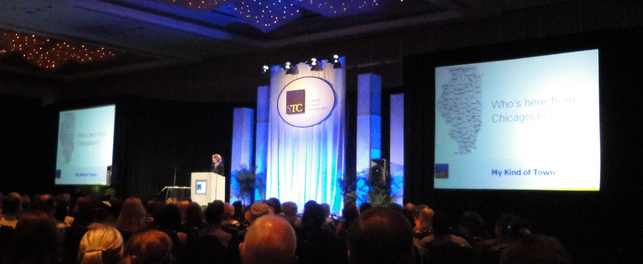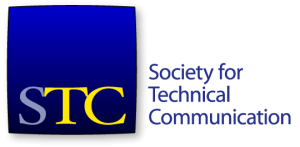I thought I would re-share my quick guide from last year and update it for the STC 2013 Summit. After attending five STC Conferences, I provide here some hints to maximize your conference experience. Enjoy!
Technology
- Sign up for Twitter and follow #stc13, @stc_org, and @stc_summit
- Don’t know about Twitter? Don’t worry! I wrote an extremely useful guide to help you!
- Join the Society for Technical Communication group on LinkedIn.
- Install a Twitter app on your smart phone/tablet/laptop such as TweetDeck or Hootsuite
- Follow the discussion online with the Cover It Live STC Summit Page.
- Friend people and participate in Twitter/session discussions.
- Sign up for STC’s Lanyrd Conference Tool
- More Social Media Info for STC: http://summit.stc.org/networking/social-media/
Sessions
- Spend 20-30 minutes planning which sessions you will attend. Use the Lanyrd Conference Website to help you decide!
- Select primary and secondary sessions for each hour, some session material may be available for preview on SlideShare.
- Determine within the first 5-10 minutes if a session excites you; if not, go to your secondary session.
- Ask questions at the end of the session.
- Complete post-session speaker evaluation(s). This year, there are QR codes to scan with your smart phone to complete your surveys. If you don’t have a phone with QR code reading capabilities, visit the STC 2013 Survey Monkey Survey site.
- Look for presentation slides after the sessions from presenters on SlideShare.
Networking
- Spend about $30 for business cards from VistaPrint if you have none. Remember to pack them.
- Hand out business cards to anyone you meet.
- Write a note on the back of each person’s business card to remind you how you met them.
- Bring paper and electronic copies of your résumé. This may result in a job opportunity after the conference.
Break Times
- Offer and/or accept invitations to dine with attendees. We don’t bite.
- Visit the vendor floor, STC Central, and the bookstore
- Attend evening events with attendees.
- Share your professional experiences.
After the Conference
- Continue networking via Twitter, LinkedIn, and e-mail.
- Look for an e-mail during the summer announcing when Conference@Click is available.
- Read the conference proceedings.
- Plan for next year, and convince your company to pay for it!
- Look for a for Call for Speakers via e-mail; maybe you can present next year.
- Keep up with current trends—check STC Notebook, Intercom, TechWhirl, and TechComm.
It’s your conference experience; make the most of it!
If you want to hang out during the conference, find me by sending me a message via Twitter: @RogerRenteria. I also will be co-presenting at Leadership Day and presenting during the Professional Development Progressions.


